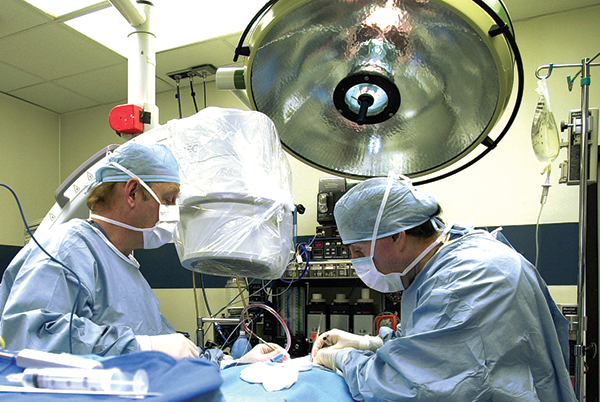This blog is excerpted from a Becker’s Spine Review article by Alan Condon from December 16, 2021. Ask Spine Surgeons is a weekly series of questions posed to spine surgeons around the country about clinical, business, and policy issues affecting spine care. Becker’s invites all spine surgeon and specialist responses.
Question: In five years’ time, what will outpatient spine surgery look like?
Over the next five years, minimally invasive technologies such as robotics and endoscopy are expected to become more prominent in spine surgery, and hospitals may be used only for complex cases on patients with significant comorbidities.
Surgeons discuss the future of spine care in the outpatient setting and how they see technology evolving in the specialty.
Grant Shifflett, MD. DISC Sports & Spine Center (Newport Beach, Calif.): How about what I hope to see? My hope would be that we look back in five years congratulating ourselves for the monumental progress we have made in shifting cases to the outpatient world and see these past couple years as a tipping point in that precipitous movement. I hope providers will find themselves having difficulty finding reasons to do spine cases in the hospital. I hope insurers will see the incredible cost savings and the value add of shifting volume out of the hospitals. I also hope that providers who make wise decisions about treating patients with minimally invasive and motion-preserving techniques are recognized and rewarded by the system. I think if you’re not on the train that’s moving patients to the outpatient environment now, you’ll be in an increasingly isolated position in five years.
Issada Thongtrangan, MD. Microspine (Scottsdale, Ariz.): I anticipate that more spine surgeries will be performed at ASCs. There will be more investment in less-disruptive surgery such as endoscopy, navigation, robotics, etc. However, the more complex cases or high-risk cases such as major deformities, tumors and infections will still be performed in the hospital. In the ASC setting, there will be more collaboration among specialists. Anesthesiologists or CRNAs will help to do postoperative blocks like erector spinae or [transversus abdominis plane] blocks. There also will be a significant reduction in opioid use. Physical medicine will help with prehab and the acute post-op phase.
Brian Gantwerker, MD. The Craniospinal Center of Los Angeles: I believe we will see a large amount of spine surgery volume being done outpatient. As endoscopic procedures get more popular and prevalent, we may see more of those done as well… The comfort level of both approach surgeons and the spine surgeons will most likely grow in the future, and I think payers will really start to see the value in these procedures being done in an ASC.
Find Relief NOW from the Institute Where Outpatient, Endoscopic Spine Surgery was Invented
There’s no reason to wait five years. Dr. Alfred Bonati, Founder & Chief Orthopaedic Surgeon of The Bonati Spine Institute, invented and patented what is now known as minimally invasive endoscopic spine surgery over 35 years ago. The Bonati Spine Institute has been performing and perfecting this technique, now attempting to be copied by others, ever since. Our targeted, outpatient procedures go beyond those found at other facilities. Utilizing a less than one inch incision, the Bonati Spine Procedures are performed with conscious IV sedation (no general anesthesia) and do not require a hospital stay. We have performed over 70,000 procedures with a 98.75% patient reported satisfaction rate. If you are looking for a resolution to your back, neck, sciatica or other spine-related pain, learn more about how we may be able to help by calling us at 855-267-0482 or complete our online contact form here.
Read the full Becker’s Spine Review article here: https://www.beckersspine.com/spine/item/53182-spine-surgery-in-5-years-4-surgeon-predictions.html

